Hello everybody! I know some of you have been waiting for my doenjang and ganjang recipes for a long time! Today I feel a real sense of achievement to release this recipe here. It’s one of the recipes in my cookbook, and whether you have my book or not, this video and recipe should still be useful to you.
Korean fermented soybean paste, called doenjang (된장), is more than just a seasoning or an essential ingredient in many iconic Korean dishes. It’s part of who we are as Koreans and how we see ourselves. A meal of rice, kimchi, doenjang-soup (or doenjang-stew), and a few side dishes is for many Koreans, the definition of a meal: breakfast, lunch, or dinner. It’s impossible for us to imagine life without doenjang.
Salty, earthy, hearty, incredibly savory and delicious, it adds flavor to many dishes and makes them distinctively Korean. Making doenjang at home takes a long time, you have to be ready to commit to it for one year! It’s not hard to make, but takes patience and some hard work, and some special equipment. But as a bonus, Korean soup soy sauce (guk-ganjang:국간장) is a byproduct of making doenjang, so you get that delicious soy sauce for free!
Of course, you can always buy doenjang and guk-ganjang in a Korean grocery store, which is what most Koreans do. But the taste of store-bought can’t be compared to homemade doenjang and guk-ganjang, you will be knocked out over how delicious they are! And I’ve never found a brand of soup soy sauce in the store that satisfied me, which is why I always use fish sauce in my recipes as a substitute.
Besides the taste, making your own is fun and satisfying to eat. Over years of making, tasting, and fermenting these iconic Korean sauces, you’ll develop experience and sophistication in fermenting and eventually become a Korean food expert.
This video was a lot of fun to make. The recipe took me 2 years to develop, and the video took another year to film. It’s finally finished and I couldn’t be happier to share my recipe with you! Koreans traditionally start the process in the winter because the weather is good for drying soybean blocks. But I discovered that indoors, in my apartment in New York, any time is a good time to start making doenjang.
I hope you try it! Enjoy the recipe!
Special equipment
- An electric mat or blanket, or ondol-style heating in your house
- Cotton flour sacking or cheesecloth
- Cotton butcher’s twine
- A large shallow bamboo basket about 17 inches in diameter, or a large baking pan lined with waxed paper
- Dried rice straw or hay that’s been well washed and dried (optional)
- A cardboard box (an 18-x-10-x-7-inch box will hold 3 bean blocks)
- A 4- to 5-gallon Korean earthenware crock (hangari) with a lid
- A 5-quart Korean earthenware crock (hangari) with a lid
- 3-5 dried jujubes (daechu)
- 3-5 large dried hot chili red peppers (any variety; about 4 inches long)
- 3 (4-x-1½-x-1-inch) pieces hardwood charcoal
Ingredients
Makes 10 pounds of doenjang
- 5 pounds dried yellow soybeans (meju-kong), picked over, rinsed, and soaked in cold water for 24 hours
- 3½ gallons water
- 5 quarts plus ½ cup kosher salt (2 three-pound boxes of Diamond Crystal brand Kosher salt)
- 2 tablespoons honey
How to make doenjang
Make meju blocks from soybeans
Blocks of crushed soybeans are called meju (메주) in Korean, and they’re the foundation of doenjang-making.
- Drain the beans and put them in a large heavy pot. Add water that is three times as deep as the beans, cover, and cook over medium-high heat for 1 hour.
- Turn the heat down to medium and continue cooking until the beans are soft enough mash easily, 4½ to 5 hours, checking to make sure the beans remain covered with water, and replenishing as necessary. Drain the beans in a colander.
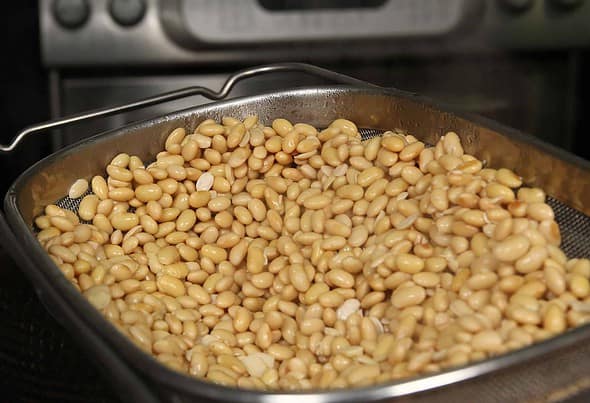
- Mash the drained beans to a paste in batches with a large mortar and pestle or in a food processor. Don’t finely grind them, leave some beans half-crushed.

- Divide the mashed beans into 3 portions. Knead each portion with both hands and shape into a firm rectangular block measuring 6 x 3 x 4 inches.


Ferment the meju
- Traditionally Koreans dry meju on the heated ondol floors of their homes, and if you live in Korea or have that kind of heating in your house, you can do that too. But in my NYC apartment I simulate ondol by putting an electric blanket on the floor. Line the blanket with a clean cotton cloth or waxed paper and set the blocks on top, or put them in an open basket. Set the heat to low. Dry the blocks, rotating them occasionally, until they are solid enough to hang, 3 to 4 days.

- Tie each block up in cotton twine and hang them. You can hang them outside but be sure to keep them covered and out of the rain, and if it’s too hot out they may rot. Inside, you can hang them from the ceiling with hooks. Wherever they hang, the spot should be cool and well-ventilated and all sides of the blocks should be exposed to air and not touching each other. Let the blocks hang for 6 weeks, until they are well dried out and smell a little pungent when you get your nose close to them.

- Now it’s time to ferment the bean blocks. Place a layer of dried rice straw or hay in the bottom of a cardboard box that’s just big enough to hold the blocks with a little space between them; the straw will insulate the blocks and attract good bacteria like Bacillus subtilis in the air. (Don’t worry if you can’t find straw or hay; the blocks will still attract good bacteria.)

- Cover the box and put it on the electric blanket. Set the heat to low and let the bean blocks ferment for 2 weeks. At this point, the well-fermented bean blocks will smell a little earthy and pungent and will be covered with white, brownish-yellow, or sometimes greenish fungi. (These fungi change the bean proteins to peptides and amino acids, which will give the bean paste its delicious nutty flavor.)
- Tie the fermented bean blocks up in cotton twine and hang from the ceiling, as before, for 1 month.


Soak the meju in brine
- Wash the blocks in cold water and to remove the fungi. Place the blocks in a shallow basket or on a baking sheet lined with waxed paper and let them dry in the sunlight for 1 day, turning them until every side of each block is dried.

- Combine the 3½ gallons water (56 cups) and 5 quarts of the kosher salt (20 cups) in a large bowl. Stir with a wooden spoon until the salt is thoroughly dissolved.
- Set out a 4- to 5-gallon earthenware crock. Put 2 pieces of the charcoal on a gas burner; turn on the flame, and heat until they are glowing red. (If you don’t have a gas burner, use the broiler: Put the charcoal pieces under the broiler and turn it on; remove the charcoal when it is red.) Use tongs to transfer the charcoal to the earthenware crock. Drizzle the honey over the burning charcoal. Cover the crock and wait for 5 minutes.

- Remove the lid. You will see lots of smoke and smell a good caramel aroma. This process sterilizes the inside of the crock and will give the sauce good flavor.
- Remove the charcoal and wipe the inside of the crock with paper towels. Add the bean blocks and salted water to the crock. Add the remaining piece of charcoal, the jujubes, and dried hot peppers; they will float on the surface of the water. (The charcoal will attract and absorb any dust. The jujubes add sweetness and the dried red peppers help prevent the blocks from going bad.) Evenly sprinkle ¼ cup salt over the tops of the meju blocks exposed to the air.

- Cover the crock with flour sacking or cheesecloth and put on the lid. Let the blocks soak in the salty water until well fermented, 2 to 3 months. On clear days remove the lid and let the crock sit in the sunlight. Close it at night and be sure to keep the crock covered with the cloth so bugs and dust can’t get in. As time passes, the salty water will turn brown and smell like deeply fermented soy sauce.

Separate the doenjang from the soy sauce
- Discard the charcoal, jujubes, and peppers. Transfer the soaked bean blocks to a large bowl. The blocks may have broken up during the soak, so use a bowl to scoop the soy sauce out of the crock and into a strainer set over another large bowl. Add any pieces of bean block to the bean block bowl. Save the soy sauce for making Korean soup soy sauce (gukganjang) later.
- Mix the doenjang with both hands, breaking it up into a paste, and transfer it to a 5-quart earthenware crock. Pack it down and sprinkle with the remaining ¼ cup kosher salt. Cover with the cotton cloth, secure it with a rubber band, and put on the lid.
- Put the doenjang crock in a sunny spot for its final fermentation. About twice a week on sunny days, remove the lid and let the sunlight shine into the crock through the cotton cloth. When it’s well fermented, the doenjang will smell sweet and taste salty and earthy, with a deep flavor. This will take 5 to 6 months. If it ever looks a little too dry on top, pour some of the separated soy sauce on top to make it moist again. You don’t need to stir it in.

Serving and storage
- Store the doenjang in the crock outside the house or at room temperature. Whenever you take some out, press the rest down with a spoon to keep out the air. Once in a while, take the lid off, cover with a cotton cloth, and let the sun hit it again.
Doenjang-making diary
Here’s a schedule of dates from a year of my doenjang-making. You might need to deviate from this timeline depending on how your project is going, but you get the idea of how long it takes and where you should be every month.
January 4 — Soaked the beans.
January 5 — Made the meju.
January 9 — Hung the meju up.
February 24 — Put the meju in a box with hay.
March 10 — Took the meju out of the box and hung them up.
April 10 — Washed the meju and let them dry in the sunlight.
April 11 — Soaked the meju in salty water.
June 11 — Separated doenjang and guk-ganjang.
June 22 — Made guk-ganjang.
December 1st — Doenjang was ready.
Maangchi's Amazon picks for this recipe
It's always best to buy Korean items at your local Korean grocery store, but I know that's not always possible so I chose these products on Amazon that are good quality. See more about how these items were chosen.



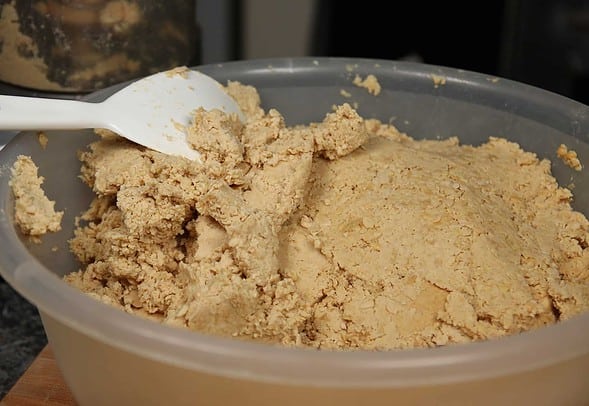
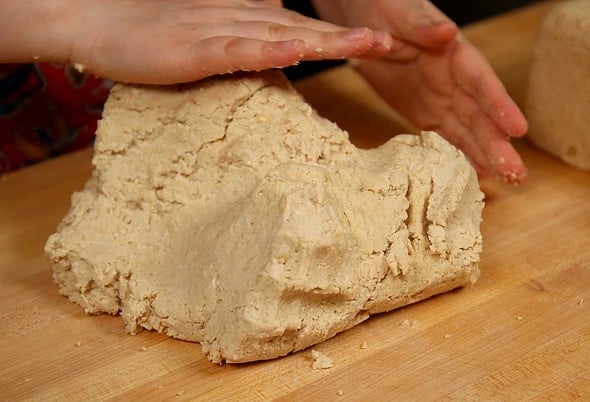
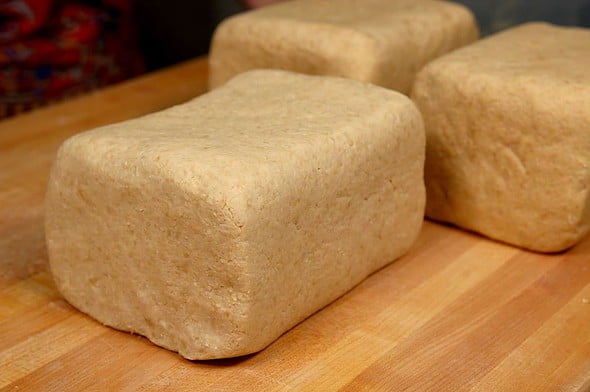
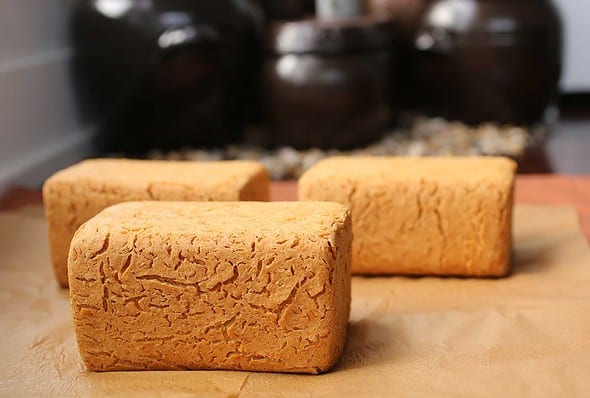
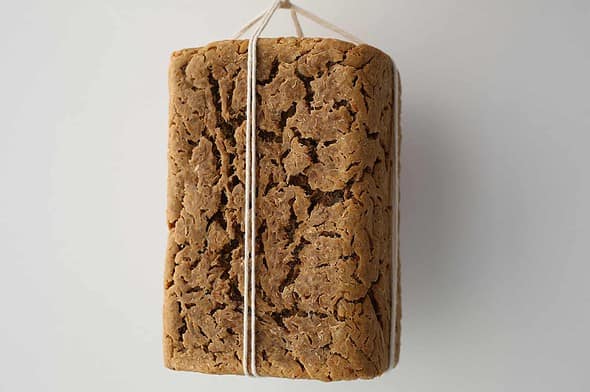
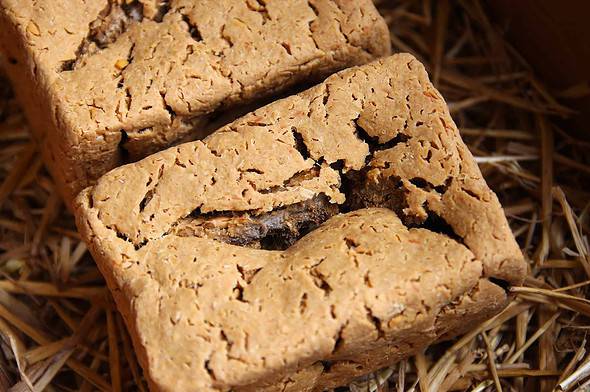
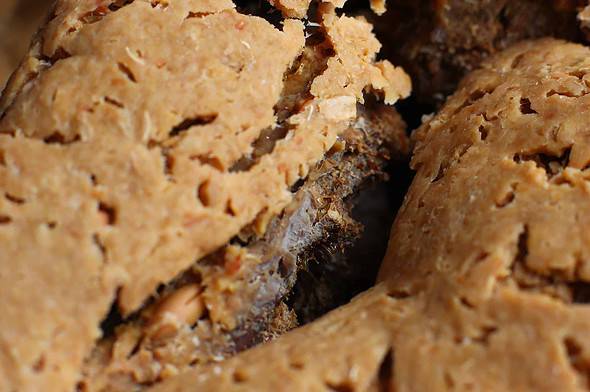
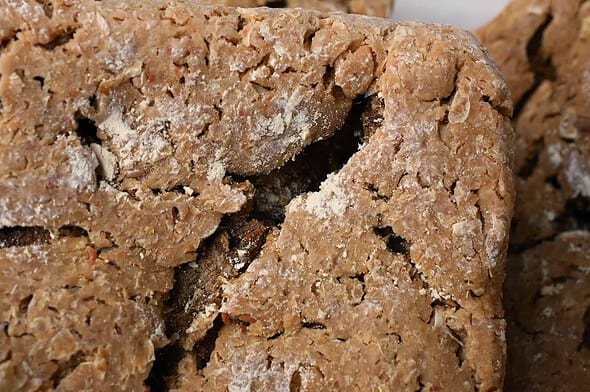
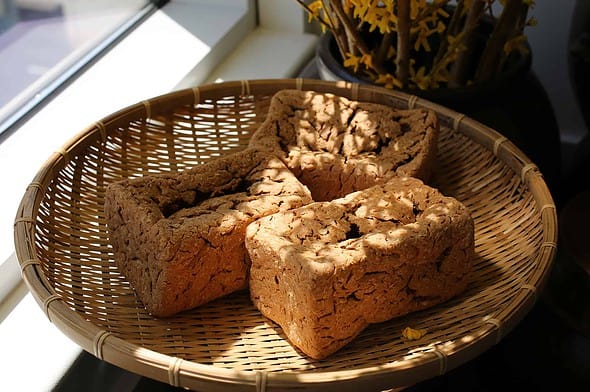
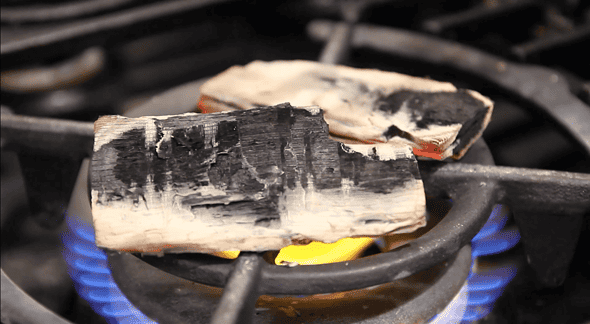
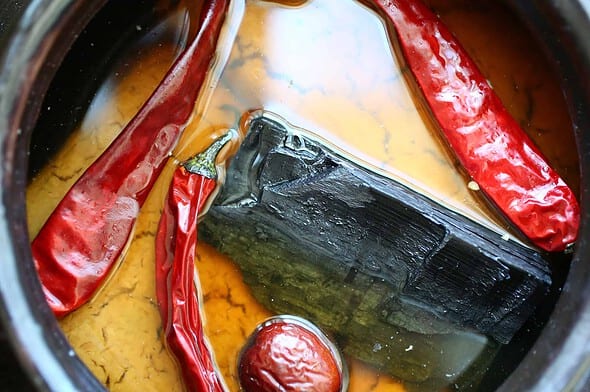
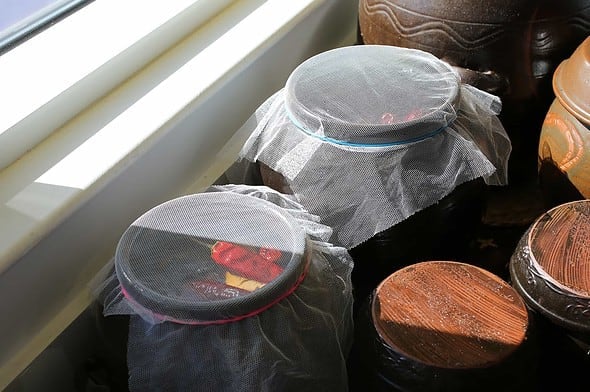
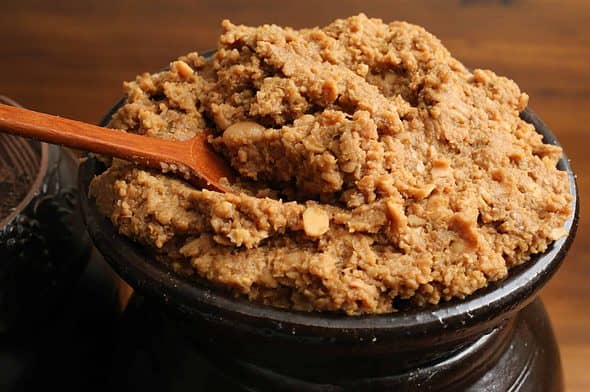























Hi Maangchi! I have been following this recipe diligently and just entered my soaking stage. My grandma gave me a very large onggi but I have noticed some white (possibly salt) seeping through the side. Is this common? Will this hurt my meju or the doenjang?
See full size image
Your grandmother gave the onggi to you? What a great gift it is! It looks very pretty.
I had to look it up and ask some people who know about the white stuff on your onggi because it has never happened to me. Anyway, you don’t have to worry about it. Yes, it’s salt. It proves the onggi is good quality. Onggi has microscopic holes that allow some gases to pass in and out, so your onggi is working very well! Good luck!
Hi Maanchi,
What will happen if I soak my Meju blocks longer than 2-3 months? Will that be damaging? Also I am soaking them for 1 month now and no fungus is growing. Is that normal?
Thank you.
Shanook
Hi Maanchi,
I am following your Doenjang recipe, which is absolutely great!
I have followed all the steps and I am now at the point where I hung my Meju blocks for almost 1 month after having it put in the carton box.
I was wondering if this looks ok so far? Is the white stuff inside fungus or are these eggs from flies? Can you please advise me.
Hi! I decided to make doenjang (not now there are so many flies) but soybeans aren’t used much in home cooking here. I once ordered them and there were too many dead beans. I don’t know where to buy and how to choose. It’s not shipped from Amazon to here. Can deonjang be made with other beans? I’ve seen miso made with chestnut but I’m not sure about doenjang.
I’m really sorry, I wrote chestnut but I was going to write chickpea and I noticed it now.
This is my first time making doenjang and I’m at the initial hanging of the meju, before putting the blocks in cardboard boxes and I’m completely lost and whether my blocks are okay or not.
I’m getting a lot of white and dark green mold growth. My meju wasn’t as tightly packed, so there are a lot of large cracks. It’s been giving off an old, smelly sock smell. Recently, I took a peak into these cracks with my phone camera and light and noticed there were two cracks on two separate meju blocks where it was all slimey. I took a sample with a toothpick and it smelled very funky… I wasn’t sure if this meant it was spoiled or not.
Could anyone look at the pictures below and let me know if this mold growth this early is okay, and any advice on the slime? It is only located on a small crevice in two of my three blocks (has not spread anywhere). I have no pictures of the slime unfortunately. My fear is that some fruit flies got into my meju and laid eggs but I’m being hopeful.
Also any reference for what the smell is supposed to be, what it’s supposed to look like, etc. It’s so hard for me to gauge if this is going well or not.
See full size image
other pics
See full size image
other pics2
See full size image
Maangchi, The second year I am making doenjang and the hanging meju smell much stronger. Very yummy, but too strong now. can I put them in the box for longer instead? I want to reduce hanging time and increase closed box time. Anything I should think about?
Thank you so much!
I think you are a master of doenjang making! You’re even replying to some of my other readers’ questions. I really appreciate it. I’m very happy to see all of us help each other for better cooking.
“I want to reduce hanging time and increase closed box time.” As long as your meju is dried well, go ahead. I think it will be ok or maybe better. Good luck!
I have tried a few of your recipes; all delicious! I followed this one exactly (except I didn’t have a crock) and after a year it is inedibly salty. I will try again with half the salt you say.
Doenjang is salty by nature. Is the soy sauce or the beans salty? Did you separate the bean blocks from the salty brine?
Hi, it was far too salty to use. When I started I mixed the salt with water, but when I took out the blocks, there was a layer of salt on the bottom. Both beans and brine were too salty.
I am wondering when you made your brine if you used the quart/cup measurements instead of doing it by weight. Salt comes in different sized crystals from large to small and that can almost double the weight of salt you are putting into your brine. The recipe uses 2 x 3lb boxes (Diamond Crystal brand)/ or about 2.72 kilos of Kosher salt minus 1/4 cup for later, so if you use both boxes but save a bit over an ounce/or +33 grams you should be okay. Hope that helps.
my meju fell apart as they dried. Can I wrap them in cheesecloth and continue all the drying?
Hi Maangchi,
If I make a smaller Meju block do I still need need the same amount of time to dry and ferment? Reason being I don’t have the Korean Onggi, so I’m using a taller and smaller opening crock pot.
It just needs to be dry all the way through and fermented well enough. Smaller meju will probably dry faster but ferment the same rate. Longer wouldn’t hurt though, unless you want it faster, so following her schedule will be fine. It will also line up with the seasons the same
I’ve tried to make it twice and both times flies lay eggs in my meju. ㅠㅠ
The first time in Nov I didn’t wrap them for the first couple weeks because the recipe didn’t call for it. Then I wrapped the three in 1 net that ended up tearing and had a whole in it so all the meju were invaded by flies.
The second time in Dec, I gave each a soup bag as they hung. But apparently as they were drying before hanging, the flies laid their eggs. ㅠㅠ
So 2/3 were unusable because of the eggs.
Attached is a picture of one of them that was cracked open by some squirrels.
I had hung it outside to try to salvage some part of it but it’s a lost cause. ㅎㅎ
It looks like a bee hive of eggs.
Does anyone have some advice about how to dry them well while protecting them from the flies?
They are fragile when they are freshly formed and they need to be turned over too.
When they were hanging, the smell was so nice so I really want to make nice 된장. ㅠㅠ
See full size image
Oh, you must be so frustrated, I’m sorry to read this.
Koreans usually make and ferment meju blocks during the cold winter time when flies don’t exist in Korea. When I make meju here in my New York apartment I am very careful not to let any flies into my house while make and hang my meju. I don’t know where you live but if you have a season with no flies, that’s a good time to start. And if not, you need to be super-careful to keep your meju from flies.
Thank you for the reply! Yes, I started in winter where I live which starts late November usually. My attempts were in late November and December.
I also used some soup bags on each but I should have put them on as soon as the blocks were not too sticky. ㅠㅠ
My third attempt was in early February. I used the soup bags again but this time the mould is different.
It’s like a fluffy grey, brown, green, and some white dots.
I think I should garbage it again. ㅠㅠ
Attached is the worst of the 3. Only this one has the dots but the other 2 have the fluffy grey and brown mould with a little bit of green mould.
It’s still a cold these days so maybe I can try one more time before the weather becomes warmer again.
Anyway, thank you for the recipe~
Even if it didn’t work out for me, it looks like a lot of people made some lovely 된장. c:
See full size image
The white kind of looks fine, but the black especially may not be good. Are you sterilizing all your utensils and washing hands well when working? Also dry hands on clean paper towels because you don’t want to touch them with moisture.
What is the humidity like in your region? It looks like the strings are cutting into the bean blocks, but they should have been dried enough before hanging so that probably shouldn’t be happening. overall your block looks very moist but should be a lighter brown and dry looking, even at the beginning when you hang it. Check your house humidity where you’re trying to hang them. It should be ~30-40 maybe.
Are you sure to drain the beans fully before forming blocks? Only beans, no water go into the menu blocks.
Oh thanks for the reply! I think I just didn’t dry them enough but they’re okay now. I didn’t have to throw them away.
I dried them longer and when they were dried enough, left them to sit on a wire rack over hay. They’re looking much better. The black mould kind of died off as it dried more and the hay really helped develop the white mould better. The only thing is that the colour of the blocks is darker than the ones in the pictures but I think it should still be ok.
They’re fermenting in the box with the hay and blanket now and I’ll hang them up again in a week or so. I’m hoping all goes well the rest of the way~!
See full size image
Hello!
My meju has been hanging for one week and has lots of white and green fungi growing.
But I noticed after day two, some fruit flies were around so I put it by an open window on a cold day to force the flies out and then covered it in cheesecloth and folded and clipped the ends with bulldog clips so the flies can’t enter.
But the last two times I opened the cheesecloth to check the blocks, a fly flew out. ㅠㅠ
I guess they hid very well. ㅠㅠ
Should I just toss it and start over?
I’m worried they’re laying eggs and pooping in my meju. ㅠㅠ
Thank you for your time!
See full size image
Flys and fleas can easily make it through cheesecloth, especially if it touches the block, then even a big one can land and touch it too.
Technically it’s only a problem once it’s a problem, but it matters how long you want to keep going before the problem might become apparent (noticable larvae, etc.) and you toss it. Their lifespan is very short though, so you should see fleas or flys hatching very fast.
Hi Maangchi. I am from India and am a vegetarian.
After seeing your videos i got interested in Korean food. So as my first try I had made vegetarian kimchi and it turned out good. And I want to try more vegetarian dishes from your vegetarian list of videos. So I bought a soya bean paste from Asian store. But I couldn’t know the ingredients list as it is in korean script. So can you pls check this and please let me know whether it has any fish sauce or anchovies sauce in it? Thank you in advance..
See full size image
Korean fermented soy bean paste is absolutely vegan. Good luck with your Korean cooking!
Some might have flavoring but you’ll probably see a picture of the flavor on it, like an anchovy or garlic or something.
Hi! I’ve been working my way through the process and am fermenting.
White mold is growing but I’m not sure if this is the kind you said was ok flowers.
Should I add more salt or salt water?
See full size image
Yes, it looks good! It’s ok flowers. : ) Just remove the white mold. How did you like the taste of your soy sauce and soybean paste?
Hello Maangchi! I was so excited to see your Dwenjang making recipe and followed it. All seemed well until the fermentation stage. My meju has been in the hangari for about a month and now has thick white covering on the surface. Is this ok?
See full size image
Sorry, I don’t know why my photo is upside down. Should I remove the white “scum” or leave it be?
It’s not scum but good mold that gives your soy sauce deep pungent flavor. Just remove it. I made my own soy sauce and soybean paste this year. Now the soybean paste has been fermented in an earthenware jar for several months and the soy sauce is in another earthenware jar. All turned out very delicious. How do you like your ganjang (soy sauce) and doenjang (soybean paste)?
Sorry here’s the extra photo of the orange spots (see previous message)
See full size image
Hello Maangchi! I’m from the Netherlands and loving your recipes! I’ve made meju blocks but they smell very strong, they are attrackting flies also. Is this bad? I’ve put nets around them but I’m still afraid the flies will put eggs on them. When I made the meju blocks, first 2 days I put them in a container which I thought was well ventilated (because I have a cat and I didn’t want him to come near the blocks) but I found out it wasn’t. So they started sweating a little and develop slightly orange spots (see picture). After this I put them in my air dryer at 40 degrees Celcius so they’re much more dry now but still very smelly and no mold yet after a week. Do you think they’ll still develop well or could the smell mean they are rotting?
See full size image
How did they turn out? If the blocks touch the bags, then insects can still touch them too. Needs some space all around.
Smells will be strong, but the first week might be a bit early, not sure. Putting them in the box to start is definitely not a good way to start. They need exceedingly good ventilation and sunlight.
I’m curious to know if the orange stuff spread and how your meju progressed, so please share!
Eggs aren’t a problem I think unless you start to see things buzzing around from hatching inside.
Hello! I am so curious too! I am reading all the comments, because I’m from Brazil, so is SUPER hot most of the time… worried haha :D
I ferment my meju block, lot of white, yellow, and pink mold. But it definitely smells earthy. Is it okay?
See full size image
Why the color of your meju is dark gray? Maybe you took this photo at night?
Did you use black soybeans? If you are in Indonesia you should use the same as they use for white tempeh. But maybe black will work too? It won’t look like doenjang for sure but if it tastes good who cares lol
So I have a week left until I’m suppose to put my blocks in a box with hay for 2 weeks and then hang another month. I have some awesome white mold growing inside my blocks, however, in my photo you can see that my blocks are drying where I can see through them. Does this mean they’re dry enough? I live in Idaho with high elevation and dryer air (but blocks hang in the kitchen that helps with adding humidity) so is it possible that it takes less time to dry for me? I lived in Korea a long time ago and their climate is similar to when I lived in Tulsa, Oklahoma which is so not the same as Idaho. So could Idaho weather and elevation reduce my drying time or did I maybe not pack my blocks enough so I’m seeing through them? This was my worst block. My other two are a little bit see through. I know they’re doing great, but I’m just wondering if they’re maybe done and ready for the brine? Thanks!
See full size image
Can you share how they turned out? I think as long as they are sufficiently dry they are ok. The question is how much fermentation has started but it looks like yours has a good amount. I don’t think you could OVER dry them, but you can under dry them.
The other thing is if you move in to the next step faster then normal your timing might not match up with the seasons, but that’s already a little different in your location anyway.
Anyway, please share your progress and how it went!
For anybody worried about mold or colors during the process, here are a few links to doenjang making videos in Korea showing things you might expect that are still ok:
Growth on top of brine – https://www.youtube.com/watch?v=XFRvNwGTD0s&feature=youtu.be&t=435
Lots of growth on top of brine, just scooped out – https://www.youtube.com/watch?v=34IQN1LD2kM
Growths inside of Meju Block – https://youtu.be/SafxD279uFI?t=486
Growth outside Meju Block – https://youtu.be/zSX_tDV1X3E?t=364
Red color inside Meju blocks when separating from salty brine
Salty brine meju and separated Doenjang – https://youtu.be/9YY5g9JGVbg?t=497
Red color inside meju after separating from salty brine – https://youtu.be/Hfaf6AwHmmc?t=177
Exceptionally moldy looking meju removed from brine – https://youtu.be/5wgD7_ogD7c?t=342
More of colored meju removed from brine – https://youtu.be/K56rYIeH4YM?t=134
Not mold specifically, but lots of good footage of the process – https://youtu.be/g4uiVnfQ23s check the description for part 2.
This is all so helpful! Thank you again!! My blocks are drying nicely and just starting to grow white mold – onto the hay next :)
Inches,
My meju blocks are very Very dry, and only one of them grew white mold. Can I still use them for Doenjang? Will they ferment property in the salt water bring and so on?
I don’t know what they look like or how long they have been drying, but your description sounds like what we’re trying to do here. White mold is good and the point is to get them really dry.
The links are AWESOME! Thank you! I learned a LOT by watching them. First and foremost, that the two batches of Doenjang I threw away, because I feared them spoiled, were absolutely ok. :D :o Today I hung two meju blocks for drying and now I am confident, that this time I will be successful. Thanks again!
Great! I started mine late this year. Just sat the blocks out to dry in front of my fireplace. Keep me updated on your progress!
It’s looking great! I dried my mejus, they showed signs of some white an green fungi, no black stuff, yay! I started soaking them on March 31. We had an unexpected cold phase, even below freezing, so I took my hangari inside for a couple of days, but now the sun is shining and the brine starts to look dark brown. I think it will work out this year although, again, no mold starts to grow.
Things I changed due to my experiences of the last tries. I removed a plant from the room the mejus were drying in. I felt they catch black fungus through them. The videos taught me (European metric system lover) to use 6kg of sea salt for 20 liters of water. I needed 5 liters and reduced the salt accordingly. Much better for me than cups and Kosher salt, as we don’t have it. Also I filtered the brine through a fine cloth to hold back stuff in the sea salt. The egg test went perfectly.
We have lots of birds in my garden and I put the hangari under my balcony for fear of bird droppings, but therefore they didn’t get as much sunlight as would have been possible the last times. Now the hangari sits exposed on my patio, but a parasol protects it from bird droppings. It is positioned so that it doesn’t create shade for the hangari. It is still sitting in full sunlight. Very contend I had that idea. ;)
Also, for the first days I suppressed the mejus into the brine by crossing two wooden skewers inside the hangari. I removed them maybe a week later. Another trick I learned in one of your video links, Inches. They were so helpful! I’ll attach a picture of March 31, the day I started soaking my beauties. Will post again and tell you all how this fun project worked out.
(Oh no, the picture is too large to upload. Maybe I’ll find a solution!)
Next try for uploading the pic.
See full size image
Just click on the link for full size image an it will show my soaking beauties. :D
So, the day of the days. The long lasting love story with my home-made doenjang continues into the final stage. Today I seperated the mejus from the guk-ganjang and … it’s looking well! Yay! The soybeans smell most definitely pungent and earthy. Is it the right pungent and earthy, we’ll have to wait and see.
Again no ‘flower’ grew in my pot, but the guk-ganjang became dark brown. Smells nothing like the different kinds of soysauce I bought in our Asian shops, but I didn’t boil it yet. And no shop sells home-made sauce, so that’s that.
I’ll attach some pictures. One is from roughly two weeks ago, the mejus were soaking for two months at that date. The level of the brine reduced significantly over time and salt crystals started to form. As we had a wet and cold spring, I decided to let the mejus soak two more weeks, because the warmth and sun came back.
The mejus looked fine to my unprofessional eye, maybe a bit more greyish that brown. I followed Maangchi’s instructions, the doenjang rests now in a pot under a little layer of salt and I hope the fermentation deities will do their magic during the next months.
Separating the mejus and guk-ganjang I found lots of salt crystals on the bottom of the hangari and threw them out.
It was a fun project, took some trials and errors to get to this stage and I am in total awe of the culture that created this process of food preparation so many centuries ago! I’ll do it again this winter and I already know, what I will change next time. My dried mejus had white and green fungi, but during the phase in the box (no straw available), these fungi didn’t grow much. I think my place was a little too dry and will test an idea. I’ll keep you posted.
*than
My salt crystals without flower.
Not enough coffee yet. Here come the crystals.
See full size image
The separated mejus.
See full size image
And finally the mashed mejus looking more greyish than brownish. Keep your fingers crossed!
See full size image
Well, I guess this is what one calls a saturated solution… The brine after cookig is sooooo salty, it is basically uneatable. So, this year’s effort failed too. :( To think I was so relieved to have found the metric measuring units in one of the vids. Oh well, I guess I will try it again next winter.
See full size image
Mangchi! 안녕하세요
I am a big fan of yours! I am a chef and love all your recipes, thank you for posting so much content and for your cookbooks too :)
I have two questions, I am about to make Doenjang, and I can only find “Thai” or Binchotan style charcoal as well as organic hay, will these work for making Doenjang? I posted a picture so you can see what I am using
My second question is: if there is a lot of cloudy days where I am and I still hang my meju / put my Onggi in the window, will the recipe still work to be “disinfected” enough? I see a lot of your subscribers have bad mold growth from not enough sunlight
Thank you!
-Matthew
See full size image
As long as there is no additives in the charcoal it’s probably fine. Mine came from Menards and it specifically said no additives. Check my images in comments below.
You don’t have to use hay but it is supposed to help. Your hay can’t hurt. If it was washed in some way it might not have spores on it, but it can’t hurt probably. Again, if it’s not treated in some way.
Most of the bad mold growth I suspect is coming from really hot and humid places, like Israel and other islands. Those are not “normal” circumstances for doenjang to be made so they’ll have to adapt a lot. Maangchi is in NY and presumably similar to MA.
Check my latest comment for lots of videos of mold growth in Korea when making. There is a surprisingly lot of mold from all these. Only slimy or putrid smells and worms are bad I think.
Thank you!
Hi Maangchi, my meju have been drying for four days. There is some white bacteria but also a tiny bit of green. Is the green ok, or is that bad mold? Do I need to throw the meju out? Thanks!
See full size image
It looks great! Your meju is being well fermented!
I’m a big fan of yours, Maangchi! After the meju blocks are hung to dry, your recipe says dry for 6 weeks. I have them hanging protected under porch ceiling. Where I live, the humidity is low, so not sure if they will need to hang for 6 weeks. Question is, Do the blocks need to be dry in the middle after hanging, before putting in the hay box to further ferment. Should they be dry all the way through? Thank you!
I do believe that the second drying is to get the blocks dried all the way through. They not only need drying, but time to ferment both where you can see and where you can’t.
Hi Maangchi! Today I made doenjang, which I think is very interesting. I’m looking forward to sniffing you!
See full size image
And this is my doenjang!
See full size image
Can I ask why your jujubes are brown? I’ve only seen them as red before.
Hi Maangchi,
I separated the soy sauce from the doenjang and now im fermenting the doenjang in a separate jar. There are little brown spotted molds forming on top. should i scrape and throw out and salt more?
Thanks again!!
See full size image
You should probably scrape the top off, yes. Are you letting sunlight in? This helps disinfect the top and keep this from happening. Put a thin white cloth over top to keep bugs out but UV in through. You can also spread a layer of salt on the top after removing this growth to help prevent this from occurring again.
Check my later comment about lots of videos and what they have growing on theirs in Korea. Your mold is probably fine, but it’s hard to tell what it looks like now or what your weather conditions are.
I live in northern New Mexico, very low humidity. My meju also were not growing mold. They developed a nice funky smell after hanging for awhile but that went away also.
I read NOMA fermentation guide and they say 86 degrees fahrenheit and 75 percent humidity is optimum for growing aspergillus mold, so, I put a plate in the bottom of a large crock pot, meju on the plate along with hay, and I poured in a shot glass of water every day so it goes to the bottom and doesn’t wet the meju directly. Lid on, of course.
A week in and I have patches of white and green mold!
Sharing this for those who also live in desert-like areas and can’t get their meju to go moldy.
I have my menu blocks drying by the fire. I’m excited to start my journey!
See full size image
I used a potato masher, ha.
See full size image
I found lump charcoal that is the perfect size. I think this will work.
P.S. the warning says do not burn inside, it will kill you!
See full size image
They are drying nicely. Changing color slightly. I can tell I did a bad job of smashing now that I can see all the whole bean pieces, haha.
See full size image
Yes, they are chunky but you can fix them. You have another chance to grind or smash them. After your meju blocks are fermented in salty water, take them out and smash them finely before putting into an earthenware crock. Good luck!
Thank you very much for your tip! I will make sure to mash them more after soaking in the salty water.
I feel your 3 meju blocks will be treated so nicely until they become doenjang (soybean paste) and ganjang (soup soy sauce)!
Dear Maangchi
My meju have black spot developing onto it ( it is in his first two weeks of drying). It no smelling bad for so far ! Should I discard it ?
Best
David
See full size image
Today I moved my meju into their new apartment. They are staying in my room ^_^
The whole house has smelled wonderful this week. It’s like fresh baked bread every day! I see white mycelium like when I made tempeh.
See full size image
Their final resting place is yearning for them below. I’m borrowing the other one for veggie kimchi fermenting. I hope my doenjang doesn’t taste like kimchi if I use the same pot.
I bought two new oongi from H-Mart because they were used for makgeoli and gochujang. Both used gluten and I need to be careful of gluten now so I cannot use them. They were expensive but now I just have to make a lot more in the future!
I’ve watched hours of videos on meju and doenjang searching for both the English and Korean words. They are all the same. The only difference I see is that some lady put pine needles on top with the red peppers, charcoal, and jujubes.
See full size image
I ended up getting a small heating mat instead of only fire. Quickly after the white mycelium began to grow between the beans.
See full size image
Tiny black dots are appearing within the white mycelium fungus growing between the bean cracks.
I will keep an eye on it but I’m sure it’s fine.
I wonder if they want more fresh air and UV disinfectant light from the sun. My windows block both from coming in ^_^
See full size image
My meju blocks are ready to be hung up after sitting in the box and heating blanket for 2 weeks.
I bought solar salt today. According to this paper I found, it has higher good bacteria and lower bad yeast if you use solar salt (or even better with bamboo salt, but that is very expensive)- https://www.ncbi.nlm.nih.gov/m/pubmed/27291678/
See full size image
I cannot get the meju all underwater. All the parts above water started growing a little white and green fungus. Is this acceptable?
See full size image
I added lots of salt all over the exposed areas. Is this the best I can do?
See full size image
Press the floated meju down once in a while so that it can be submerged in salty water which will keep the surface from attracting mold.
The mold color looks good to me. If it’s bothering you, gently wipe off the mold with paper towel. I am making my own doenjang these days and my meju is soaked in salty water right now. I keep pressing the meju down.
Good luck!
Thanks for providing feedback throughout my process ^_^
Here is the latest progress photos. The bean blocks are pressed below the water, but now the green and white is floating on the top.
See full size image
I have removed some of the growth for inspection. The growth is growing somewhat white after the green color. Now that there is a lot more white among the green, small orange dots have begun to appear in the white areas.
On the underside of the growth, there is black. This looks like what happened to the mold that was on the meju after I submerged it under the water. It looks like the growth dies when touching the salt water directly, so the underside of this growth is the dead parts.
I’m fine with keeping this inside if that is what is expected, but I keep wondering if I should try to remove as much as I can. My other comment detailed many videos of korean people making doenjang with lots of growth, but I still have a hard time believing it’s ok, lol.
Like this for example: “Lots of growth on top of brine, just scooped out – https://www.youtube.com/watch?v=34IQN1LD2kM ”
has so much growth all the way at the end and they just scoop it out without worrying. I guess everything is ok then? ^_^
See full size image
For other’s reference, I carefully removed all of the stuff that was floating on the top of my jar per recommendation from the Korean Cultural Center of Chicago. I also wiped the edges with a paper towel dampened by tequila (they suggested Soju).
There began to be a lot of orange and built up drops of liquid on top. It was kind of slimy I learned when removing it. It may have been fine to keep it but it’s probably better to have removed it. It was pretty easy to do anyway.
Then just for good measure, I heated up some charcoal to white and plopped them in on top with new dried peppers and jujubes. I also combined my two jars because the largest jar seemed to have evaporated quite a lot of liquid.
See full size image
My doenjang is playing in the snow for the first time in its life. I got the glass lids that allow air and sun but block rain and snow.
See full size image
Separation day! I was very excited to split my meju from the soup soy sauce. I only had a little bit of growth inside my bean blocks. I used a food processor to blend a lot of it before putting it back into my onggi because I didn’t mash them well enough when I made the meju blocks in the first place.
I boiled these inside because I had no way to do it outside. Oh boy did it smell. It’s wasn’t really a piercing bad smell, but it was certainly reminiscent of a wet dog which was unpleasant, haha. I’m going to give it a few days before I try cooking with it, but I’m very excited to try the guk-ganjang in a recipe!
See full size image
Wow, congratulations! “I boiled these inside because I had no way to do it outside. Oh boy did it smell.” Haha!
I’m going to separate mine this week! I doubled the recipe this year.
I could not wait 5-6 months for the final ferment. On month four, I snuck some out of the pot and made thick doenjang stew and blanched bok choy. The bok choy was very good the next day after sitting in the fridge.
I guess I’ll wait a little longer before I eat too much though ^_^ More progress pictures to come.
Now I need to find some basic marinades for tofu and vegetables using this. I will start a second batch of gochujang soon and begin another oongi of doenjang after that!
See full size image
I love my doenjang! I made doenjang jjigae and also focaccia with gochujang and green onions and black garlic. So great!
I started my second batch of doenjang late this year. I looked at my three blocks and said “next year I’m definitely doubling this”. It’s so much work for just three blocks ^_^
I have 5 onggi, but now I need more. I have to get some smaller ones to migrate last year’s doenjang and gochujang so I have the big containers for my new batch!
See full size image
Maangchi thank you for the recipe. My 7yr old daughter and I have had fun trying this recipe. Lots of challenges trying this in Singapore but we’re at the stage of soaking our blocks with great results thus far. We had to make some changes for the heat and humidity but everything looks great! Thanks again.
I was not very diligent in smashing the soybeans, so I hope that it’s not too chunky to be able to ferment properly or hold together we’ll ^_^
See full size image
My meju blocks are ready to be hung up after sitting in the box and heating blanket for 2 weeks.
I bought solar salt today. According to this paper I found, it has higher good bacteria and lower bad yeast if you use solar salt (or even better with bamboo salt, but that is very expensive)- https://www.ncbi.nlm.nih.gov/m/pubmed/27291678/
See full size image
Sorry, I accidentally replied here a few times instead of my own thread >_<
Hi Maangchi, another great video from you.. Anyways, i cant seem to find any fermented soybean powder/flour here, after watching this video, was thinking if i can grinding the meju blocks down to be fermented soybean flour/powder?
Thanks.
Meju garu is actually not made with just meju but made with soybeans, rice, or wheat. I have never made meju-garu but someday I will post the recipe after learning how to make it.
I also cannot get meju garu where I live. Amazon here does not sell it and my local storekeeper John is trying but so far no luck…….
So I am currently making some for myself. I found a recipe for meju for gochujang using soybeans mixed with glutinous rice. If glutinous rice is used, the ratio between soybeans and glutinous rice is 5:2. I am currently doing a test block using 750 g soybeans to 300 g glutinous rice (as an analogue to the normal meju for doenjang). It is currently doing its last month hanging. I am then going to try and dry and grind it. So far it has gone really well. The first time the sweet rice was too wet and the block was sloppy, so the next time I actually got it right by adding less water to make the cooked rice quite dry, then added it hot to the drained hot soy beans and stick blended it. It was a bit stickier than a normal meju block but if you use damp hands it will form well. It is smoother though than a soy only block. I also use my airfryer that has a food dehydrating function (at 60C) to dry the block, to stop insects and bad mould. I put it on parchment paper to start it off and remove it as I turn it and it firms up. About 3-4 hours usually does it, then it can be hung. Hope this helps a few people to feel confident to experiment and if anyone wants to know how it concludes, I am happy to share! I also have pictures as well.
I have maggots in my meju what should I do
The meju blocks must have been exposed to flies! I would throw them away.
Maangchi i have meju thin becous this i turnd to direction side and meju block no dry in the meju this duration is rot files after 4 day dry them electrical mat what do you do.
Hi maangchi,
Look, I made so much. ^-^. But thats ok. It was fun making it. I think next time I will measure the amount of soybeans more properly haha
See full size image
Looks great! Your blocks are a little small it seems, so you have just about the right amount for this recipe! It doesn’t really matter how much beans, as long as you have the right salt to water ratio when you soak them in the brine. You will have more blocks that can float and reach the surface, so it might grow a lot of fungus on top, which is ok (check the comments for one by me with lots of videos from Korea). You can also use chopsticks or bamboo strips to hold them down if you can manage to stick them in the oongi somehow properly.
Hey i farmnted meju block 4 day in electrical mat 2 side and not dry enough in the meju and rot flies come in the meju i am start new now.
Electrical mat 2 side? I don’t know if you mean you wrapped them with the mat or not. They should not be closed if so, just on top of the mat.
The point at this step is to dry them out enough that strings can hold them up without cutting into the blocks or them falling apart.
Wow… this looks like quite a challenge. Do you know how to make chungukjang? Anyhow, when I lived around Migeum Yuk, there was a sweet old ajumma and her husband who ran a steak restaurant. She made the most delicious doenjang guk. She did use homemade doenjang, but I really want to know her secret. It was very bitter – in a good way. Bitter and savory. I really liked the bitterness – a very sharp flavor. She was always impressed because I would devour the stuff. Do you have any idea what her secret may have been?
https://www.maangchi.com/recipe/cheonggukjang
Thanks, sanne!
You’re welcome. I’ve been scarce lately due to personal problems (e. g. lost a tooth yesterday).
“Post awaiting moderation” (“Green Pepper Muchim”)… too scarce; obviously…
Yeah!!! I got on to the next step. I think it’s looking good. I have 2 questions.
1. Where is it best to store the soy sauce? After boiling I put it back in a clean hangari, and put in a cool basement. Does it need to be outside in the sun even when the temp. gets quite hot or quite cold or can it just age in my basement?
2. Same for the doenjang. Is it ok in our house at constant 70 degrees opening up 2 times a week to get sun or should it be outside? Our climate goes from below zero in winter to 90-100 in the summer(Now).
Thanks so much for this recipe. It’s been quite an adventure.
See full size image
Do you think I can make this with another kind of bean and have it taste the same? I’m unfortunately allergic to soybeans, and while I’ve found substitute soyless soy sauce, I haven’t found any soyless doenjang.
Thanks!
Here I am at 5 weeks. Is this OK? I have cleaned the fungus off a couple of times. In your instructions it says to let ferment for 2 to 3 months. How do I know when to strain it or let it go a few more weeks? Also do I need to keep cleaning out the white/green off of the charcoal and peppers. Thanks.
See full size image
It looks like your soy sauce needs more sunlight! The color of the soy sauce looks good though. “do I need to keep cleaning out the white/green off of the charcoal and peppers” I would remove them and add new peppers, wood charcoal, and jujubes. You should soak the meju blocks at least 2 months. Good luck!
Hello everybody!
I just wanted to show off my meju to you all, and to update my progress. To make these I used 5kg (11lb?) of soy beans, and the spare blocks are going to be used to make mejugaru, which I have not been able to find easily to buy pre-made. The blocks are 3 days old and in a wire basket hanging up, with a heated cable running underneath, and I think they will get hung up to dry properly tomorrow. The process is very enjoyable, and although it seems like a lot to do, there is time between every big step to organise the next one. I cannot wait to make the doenjang and gukgangjang, but also the mejugaru so I can make some gochujang too .
Can I just please ask Maangchi, will I make the mejugaru following the fermentation on straw, then dry thoroughly and grind to flour? Also, is pet shop bought straw ok? Sorry to go off topic with the mejugaru, and if you have already answered the straw question. Thanks
See full size image